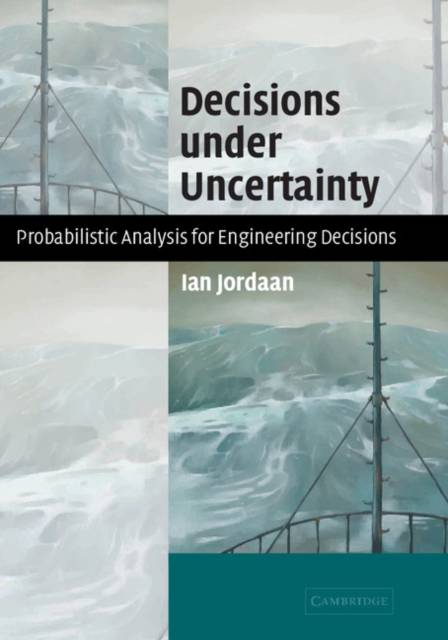
- Afhalen na 1 uur in een winkel met voorraad
- Gratis thuislevering in België vanaf € 30
- Ruim aanbod met 7 miljoen producten
- Afhalen na 1 uur in een winkel met voorraad
- Gratis thuislevering in België vanaf € 30
- Ruim aanbod met 7 miljoen producten
Zoeken
Decisions Under Uncertainty
Probabilistic Analysis for Engineering Decisions
Ian Jordaan
Hardcover | Engels
€ 170,45
+ 340 punten
Uitvoering
Omschrijving
To better understand the core concepts of probability and to see how they affect real-world decisions about design and system performance, engineers and scientists might want to ask themselves the following questions: What exactly is meant by probability? What is the precise definition of the 100-year load and how is it calculated? What is an "extremal" probability distribution? What is the Bayesian approach? How is utility defined? How do games fit into probability theory? What is entropy? How do I apply these ideas in risk analysis? Starting from the most basic assumptions, this book develops a coherent theory of probability and broadens it into applications in decision theory, design, and risk analysis. This book is written for engineers and scientists interested in probability and risk. It can be used by undergraduates, graduate students, or practicing engineers.
Specificaties
Betrokkenen
- Auteur(s):
- Uitgeverij:
Inhoud
- Aantal bladzijden:
- 690
- Taal:
- Engels
Eigenschappen
- Productcode (EAN):
- 9780521782777
- Verschijningsdatum:
- 25/04/2005
- Uitvoering:
- Hardcover
- Formaat:
- Genaaid
- Afmetingen:
- 178 mm x 254 mm
- Gewicht:
- 1401 g

Alleen bij Standaard Boekhandel
+ 340 punten op je klantenkaart van Standaard Boekhandel
Beoordelingen
We publiceren alleen reviews die voldoen aan de voorwaarden voor reviews. Bekijk onze voorwaarden voor reviews.











